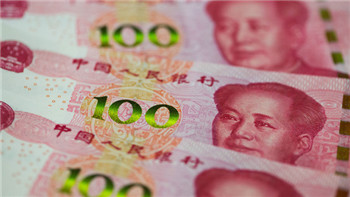
After record capital outflows, stock market turmoil and a renminbi under severe pressure, the world has been waiting for reassuring economic news from China. So much so, that even when Beijing announced the country’s lowest economic growth rate since 1990, investors took comfort and set global equity and oil prices on to a firmer trend.
在看到中国出现创纪录的资本外流、股市动荡以及人民币承受重压之后,全世界都在等待中国发布令人安心的经济数据。这种心情如此迫切,以至于即便中国公布了自1990年以来最低的经济增速,投资者也依然感到欣慰,推动全球股市以及油价走势好转。
Some optimism is justified. The official growth rate may have slowed from 7.3 per cent in 2014 to 6.9 per cent last year, but that remains within touching distance of Beijing’s official target of around 7 per cent. There was also unambiguous evidence that China is starting to achieve its long-heralded transition away from investment and heavy industry as the main locomotives for growth in the world’s second-largest economy. The huge steel and power sectors announced a full-year contraction in output volumes.
保持一些乐观情绪是有道理的。中国官方经济增长率或许已从2014年的7.3%降至去年的6.9%,但这个数字仍处于政府制定的“7%左右”的增长目标范围内。还有确凿证据表明,中国正开始实现其长期宣称的经济转型——使全球第二大经济体不再把投资和重工业当作主要增长动力。中国庞大的钢铁、电力行业的全年产值出现萎缩。
Equally encouraging for the cause of structural transformation were figures showing that consumer spending contributed 66 per cent of China’s gross domestic product growth, the biggest contribution since 2001. Further underlining this shift, a booming service sector accounted for 50.5 per cent of GDP growth, 10 percentage points more than the once-dominant manufacturing sector.
就结构转型而言,一些数据同样令人鼓舞,这些数据显示消费支出对中国国内生产总值(GDP)增长的贡献达到了66%,是2001年以来的最大值。进一步突显出这种转型的是,蓬勃发展的服务业对GDP增长的贡献达到50.5%,比曾经占主导地位的制造业高出10个百分点。
Such progress, however, does not disguise either the pain inherent in the transition or the deep faultlines that threaten to fracture China’s dynamism. Chief among these is the uncomfortable fact that China is buying much of its growth through a ballooning issuance of corporate and household debt.
然而,这些进步既不能掩盖转型过程中固有的痛苦,也不能掩盖有可能破坏中国经济活力的深层缺陷。最严峻的一个问题是,中国很大一部分增长是依靠不断膨胀的公司和家庭债务实现的,这种情况令人不安。
Not only does China have the world’s highest private debt levels — having overtaken the US, Japan and South Korea since the 2008-09 financial crisis — it also has the highest debt service burden as a proportion of GDP alongside Korea, according to estimates from the Bank of International Settlements (BIS). Indeed, the costs of servicing Chinese private debts amount to around 20 per cent of GDP, up from 12 per cent in 2009, the BIS says.
据国际清算银行(BIS)估算,中国不仅私人债务水平世界最高(自2008-09年金融危机以来已超过美国、日本和韩国),其偿债负担与GDP之比也与韩国同处世界最高水平。国际清算银行表示,实际上,中国私人债务的偿债成本与GDP之比已从2009年的12%上升至20%左右。
Such debt burdens, coupled with overcapacity in several industries and declining industrial profits, threaten to tip China’s investment slowdown into a disorderly rout. The investments made by companies slipped sharply in December, falling well below the full-year expansion rate of 10 per cent.
这些债务负担——加之多个行业存在产能过剩、工业利润下降——有可能使中国的投资放缓变成无序崩溃。去年12月企业投资大幅下滑,远低于全年10%的增速。
The danger now is that the contraction in industrial profits, the debt service burdens and a flagging property market could together depress household income growth — jeopardising the consumer spending that forms the most robust stratum in the economy.
现在的危险在于,工业利润萎缩、偿债负担以及房地产市场萎靡可能共同抑制家庭收入增长,危及正在成为中国经济最强支柱的消费支出。
For its own sake and for that of an imperilled global economy, Beijing should prepare a robust fiscal and monetary bulwark against signs of consumer fatigue. With a fiscal deficit that totalled 2.3 per cent of GDP last year, China still has room to divert extra fiscal resources to support welfare payments for less well-off segments of society, thus helping to shore up spending.
为了本国经济健康发展同时也是为了处于危险中的全球经济,中国政府应该构筑稳固的财政和货币政策堡垒,以抵御消费疲软迹象。中国去年的财政赤字仅相当于GDP的2.3%,因此仍有余地投入额外的财政资源以加强对较不富裕群体的福利支出,帮助提振消费。
In addition, Beijing should consider aggressive cuts to its bank required reserve ratios this year, thus releasing significant stores of liquidity into the economy and boosting demand. In addition, gradual cuts in interest rates may also help alleviate the debt service burden falling on corporations.
此外,北京方面今年应该考虑大幅降低银行存款准备金率,从而向经济释放大量流动性和并提振需求。另外,循序渐进地降息也有助于减轻企业的偿债负担。
Many economists do not give credence to China’s official GDP figures, believing the real rate of growth to be significantly slower. But whatever the reality, Beijing faces a risk that without measures to support consumer spending, the current slowdown could morph into a slump. Recent events have shown how fragile confidence can be when it starts to unravel.
许多经济学家不相信中国官方GDP数据,他们认为中国的经济增速实际上要低得多。但不管实际情况如何,中国政府面临的风险是,如果不出台措施支持消费支出,当前的增长放缓有可能演变成经济萧条。近期发生的事件已经表明,信心一旦开始瓦解会变得多么脆弱。












